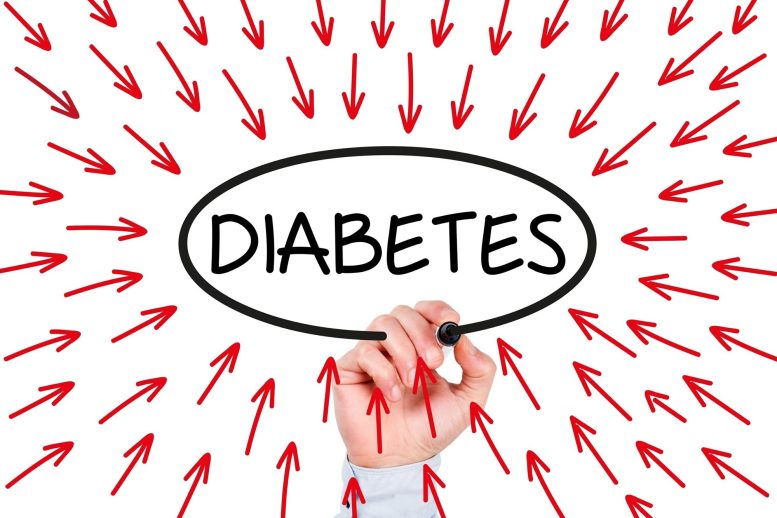
Age, race, income level, obesity, and physical inactivity all contribute to the risk of being diagnosed with diabetes.
According to a recent study from the University of Georgia, Type 2 diabetes saw a nearly 20% rise between 2012 and 2022.
The researchers found an increase in diabetes among all sociodemographic groups. But non-Hispanic Black people were particularly hard hit by the disease, with just under 16% of Black study participants reporting being diagnosed with Type 2 diabetes.
More than one in five individuals aged 65 or older had the condition. The same age group was more than 10 times as likely to be diagnosed with diabetes than people in the 18-to-24-year age bracket. People between the ages of 45 and 64 were over five times as likely to receive the diagnosis.
The study also found that individuals with lower incomes had a significantly higher prevalence of diabetes than their higher-income counterparts. People with high incomes were 41% less likely to be diagnosed with the disease. Individuals with a college education were 24% less likely to be given a diabetes diagnosis.
“Diabetes is increasing day by day in the U.S., and it will increase even more in the coming years,” said Sulakshan Neupane, lead author of the study and a doctoral student in UGA’s College of Agricultural and Environmental Sciences. “Diabetes costs around $412 billion, including medical costs and indirect costs like loss of productivity. That’s a huge amount, and it’s only going to increase as more people are diagnosed with the disease.”
South, Midwest particularly vulnerable to diabetes
The researchers used data from the nationally representative Behavioral Risk Factor Surveillance System, an ongoing health survey of more than 400,000 people.
They relied on the same dataset for a paper published by the American Journal of Preventive Medicine in April, which emphasized the economic burden of Type 2 diabetes and the increased prevalence of the condition over the same study period as the current paper.
In addition to other risk factors, the researchers found regional differences in diabetes prevalence as well.
The South and Midwest, in particular, experienced large jumps in the number of individuals with Type 2 diabetes, with Arkansas, Kentucky, and Nebraska reporting the highest increases between 2012 and 2022.
Ten states saw increases of 25% or more over the decade-long study period: Arkansas, Kentucky, Nebraska, Texas, Alabama, Minnesota, Illinois, West Virginia, Delaware, and Massachusetts.
“In these areas, people are at higher risk of developing diabetes, so policymakers and public health officials need to focus on these regions,” Neupane said.
Overweight, obese individuals more likely to have diabetes
Overweight and obese participants were also more likely to report being diagnosed with Type 2 diabetes. About one in five obese individuals reported having the disease in 2022 while one in 10 overweight participants reported having the condition.
Physical activity seemed to guard against diabetes to an extent, with physically active individuals facing a prevalence of under 10% while inactive people experienced a rate at closer to 19%.
“Identifying these risk factors and acting to mitigate them is key,” Neupane said. “Be more active. Pay more attention to your physical health. Some risk factors like age and race cannot be modified, but you can do something to lower the risk of diabetes, like, healthy eating, maintaining an active lifestyle, and losing weight.”
Reference: “Regional disparities in type 2 diabetes prevalence and associated risk factors in the United States” by Sulakshan Neupane, Wojciech J. Florkowski, Uttam Dhakal and Chandra Dhakal, 18 July 2024, Diabetes, Obesity and Metabolism.
DOI: 10.1111/dom.15797
Never miss a breakthrough: Join the SciTechDaily newsletter.
4 Comments
By 1935 Dr. Arthur F. Coca (“The Pulse Test,” 1956) identified, studied and reported on a very, very mild kind of food allergies that could cause obesity and diabetes (minimally), which mainstream medicine still fails to recognize and research as true allergies. By the early 1970s the US FDA approved soy processed with toxic hexane with some residue as a food additive with the US Female breast cancer epidemic presenting by 1979. In 1980 the FDA approved the expanded use of added MSG knowing full-well then (FASEB) it would be harmful to some but not “how, how many or how soon?” The US obesity (minimally) epidemic presented by 1990. Other research has shown that both soy and MSG interfere with optimal thyroid function and that exercise can improve the output of T4 to help explain that factor. Lower income and minority groups probably regularly ingest poorer quality foods (including too-frequent doses of favorite allergens) than the more affluent. I first wrote the FDA (with replies) of some of this in October of 2005. If you want to end the obesity and diabetes (minimally) epidemics it will probably require closing-down the FDA and reversing several of it’s long-standing approvals.
Statistics and correlation don’t solve the problem. Parents who over feed their children making them obese at 7 years old, Blame genetics and push the old saw that fat is beautiful. So is cancer beautiful? Polio? Whooping cough? Measles? STDs? Syphilis?
Covid? Diabetes is a health comorbidity putting individuals at greater risk of dieing. Fat will kill you.
Agreed, Samuel, just citing statistics and correlations doesn’t solve anything. However, when the statistics are official and can be directly tied to prior official acts then they are not irrelevant, either. More on my non-monetary video channel: https://odysee.com/@charlesgshaver:d?view=about
Do we have to go into a lockdown?